We’re going to talk about a painful topic,” Callbacks”. I bet I just made the hair stand up on the back of your neck. After being a contractor for 23-plus years and speaking to contractors daily, one of the most proverbial pain points in owning a contracting business is callbacks. Callbacks can be highly frustrating Read more
Guest Blog

We’re going to talk about a painful topic,” Callbacks”. I bet I just made the hair stand up on the back of your neck. After being a contractor for 23-plus years and speaking to contractors daily, one of the most proverbial pain points in owning a contracting business is callbacks. Callbacks can be highly frustrating, a waste of valuable time, increase technician turnover, very expensive for the company, and in some cases, the loss of a customer. Throughout this article, will talk about dissecting the cause, and I will give you four steps you can implement to reduce them.
If we break callbacks into four categories; human error, manufacturer defects, lack of training, and inadequate operations it will be much easier to identify a rationale to track them. We are all human and prone to make some mistakes and even the best manufacturers have some defective products that find their way to the wholesaler’s shelf. Training is one of the best areas to maximize your efforts as it improves technician confidence which customers will immediately notice when speaking to them. A company-wide training culture also creates validation that a tech fully understands the product “before” being asked to service or install products. Operations afford owners and managers to be transparent with their techs when an event occurs and how to prevent them from moving forward. Using technology can help mitigate callbacks by bringing consistent operations to the top of mind, customer communication, and customer specifics, when techs are in the field.

Human Error
Unless the mistake is repetitive, or constantly not following company operations, human error is a hard one to have a resolution for. Good coaching, knowing and interacting with your techs, and being transparent with technicians are some of the best procedures to help with human error. Look at the data and see if there is a pattern. Perhaps something is happening with that senior tech outside of work that is causing the errors at work. Tracking the errors by the technician and job type is a best practice to reduce them.
Manufacture Defects
Contractors attempting to get paid for a manufacturer defect is challenging. We all know most times if a product fails under the warranty period, it will replace the part but not pay for any of the labor. Even on a DOA (dead on arrival) issue, this policy stays true however, there are exceptions. The key takeaway for handling defective products is to track them. Tracking them gives you the availability to see trends and make adjustments to the product or manufacture. It’s also worth noting to differentiate between the product and the tech doing the work. Specifically, make sure it is the product and not an install or service procedure the tech is not doing correctly. Once you track how many manufacturing defects you see in the course of the year, then calculate and it should become a line item in your pricing structure as a cost of doing business. Yes, this is a normal expense item that is a cost to run a business. Large corporations operate this way as they know there will be mistakes and contracting is no different.
Operations
Constantly monitoring and adjusting your operations can play a role in reducing callbacks. There are numerous CRM’s that help automate tracking the data to make adjustments. Data like trends in a job type, what products were used, which tech did the work, and the amount of time the tech was on the call. Automation also helps to mitigate confusion between the customer, dispatcher, and the original call. Defining and adjusting operations that affect callback mitigation is key to reducing them company-wide. Be completely transparent with company procedures between the technicians and their manager as to what happens when there is a callback.
Training
Teachable and trainable moments on an individual and company-wide basis can be produced through callbacks. Decide if there is one tech or several techs on a given call type having callbacks. If it’s several techs on the same callback, bring them together and reinforce the training on the hows and whys and just as importantly track the outputs of the training efforts. Make the adjustments from the group to individualized training accordingly if the callbacks persist with one technician. If the callback is from an individual and it’s identified as a training issue, assign or implement the training and as an interim, use your CRM to prevent that tech from doing the call type until it is confirmed the tech thoroughly understands the original mistakes made. Providing, implementing, and tracking training for your tech is one guaranteed way to mitigate technical and operational mistakes that lead to callbacks. In the fast-paced business environment, numerous contractors don’t value training or implementation of activity at the level it should be. There are other, less expensive options available to contractors to use a training tool instead of traditional brick-and-mortar training models. Digital and virtual reality software is available at one-third the price per technician. This training can be done asynchronously and not affect workflows and scheduling. All of the metrics are available to track the progress of a technician’s performance against the training activity assigned to a technician and help with callback mitigation.
There you have it! Implement and or refine these four tactics in your business and you will start to reduce some of your callbacks. It should be noted that one of the impacts of a callback not mentioned in this writing is the financial impact and opportunity costs of a callback on the company’s bottom line. Look for a breakdown and explanation of that in future articles. Happy Contracting!
 Guest Blogger: Ken Midgett, has been in the plumbing and heating industry for over four decades. He has worked in every facet of the plumbing and heating industry. He has owned two successful PHCC businesses, is a licensed Master Plumber, a two-time national award-winning educator for plumbing and heating CTE classrooms, with a 100 percent placement into the industry for all eligible seniors from his program. Ken was noted throughout the CTE industry for the inclusion of non-traditional workers in his classroom, including young women. He has placed several of those young women in the workforce. Ken is passionate about the skilled trades and he continues to stay active in PHCCNA and PHCCPA. Ken is the current president of his local PHCCLV association. This role has allowed him to continue mentoring and coaching young apprentices in the field. He is currently employed at Interplay Learning as the Plumbing Market Director. You can follow Ken at www.linkedin.com/in/kenmidgett.
Guest Blogger: Ken Midgett, has been in the plumbing and heating industry for over four decades. He has worked in every facet of the plumbing and heating industry. He has owned two successful PHCC businesses, is a licensed Master Plumber, a two-time national award-winning educator for plumbing and heating CTE classrooms, with a 100 percent placement into the industry for all eligible seniors from his program. Ken was noted throughout the CTE industry for the inclusion of non-traditional workers in his classroom, including young women. He has placed several of those young women in the workforce. Ken is passionate about the skilled trades and he continues to stay active in PHCCNA and PHCCPA. Ken is the current president of his local PHCCLV association. This role has allowed him to continue mentoring and coaching young apprentices in the field. He is currently employed at Interplay Learning as the Plumbing Market Director. You can follow Ken at www.linkedin.com/in/kenmidgett.
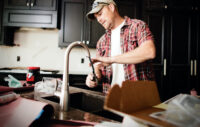
By Bryan Cordill Buildings—including homes—are a significant source of greenhouse gas emissions. In fact, homes account for nearly 40 percent of carbon pollution in the United States, according to the U.S. Green Building Council. Builders and contractors have several options available to them to lower the carbon footprint of the homes they build. Not only Read more
By Bryan Cordill
Buildings—including homes—are a significant source of greenhouse gas emissions. In fact, homes account for nearly 40 percent of carbon pollution in the United States, according to the U.S. Green Building Council. Builders and contractors have several options available to them to lower the carbon footprint of the homes they build. Not only in the embodied carbon of the building, but also in the operating emissions of the home over its lifetime.
The Propane Education & Research Council (PERC) understands the need and desire for builders to do their part in the homes they build. Its Propane Construction Incentive Program encourages more builders and remodelers to incorporate clean, reliable propane into their projects. The program awards qualifying and selected construction professionals a monetary incentive for building or remodeling homes using propane appliances in exchange for sharing emissions data and insights regarding their propane use at each home.
Todd Fitzgerald is a builder and owner of Father & Son Construction in New Hampshire. He’s been building homes for 30 years and has participated in the Propane Construction Incentive Program since 2018.
“Building and living in a sustainable home is growing more and more important to my customers, so that makes it part of my job, Fitzgerald said. “When we’re out building and we can use propane, especially through this program, we do it.”
Builders across the country are participating in the Incentive Program and seeing the environmental benefits of using propane in the homes they build. In 2022, the program resulted in the elimination of more than 18 million pounds of carbon dioxide equivalent (CO2e) per year in more than 1,000 homes across 19 states compared to building the same homes all electric.
Eliminating over 18 million pounds of CO2e is a huge win for the planet. It’s equivalent to eliminating greenhouse gas emissions annually from:
- 1,839 gasoline-powered passenger vehicles driven for one year.
- 1,038,249,446 smartphones charged.
- 1,075 homes’ energy use for one year.
Many people mistakenly believe an all-electric home is the only way to reduce or eliminate carbon emissions. But this data shows that pure electrification is not the answer, instead builders need to consider a strong energy mix in the homes they build, and that energy mix should include propane.
It will take decades and cost trillions of dollars to expand the country’s electric grid to service an all-electric housing stock. Not to mention, much of the U.S. grid electricity is produced by burning natural gas or coal. Propane is an immediate solution to accelerate decarbonization, as the findings from last year’s program show.
The Propane Construction Incentive Program offers a baseline incentive of up to $1,000 to builders or remodelers who upgrade to propane appliances in a new build or a remodel. Applicants can also earn an extra $500 on top of the baseline incentive based on their geographic location. Visit propane.com for more information.
The 2022 program awarded $1 million in funding to construction professionals who provided data from the Energy Planning and Analysis Tool comparing the emissions of the propane appliances to their electric alternatives. Installations included propane furnaces, water heaters, fireplaces, cooktops, ovens, clothes dryers, outdoor grills, and standby generators.
“Participating in this program means there is extra money coming in to offset costs, which is really good,” Fitzgerald said. “Plus, it’s easy to sign up. I choose propane over other energy sources because it’s efficient and clean. It’s good for the environment, and that’s important to me and my customers.”
Builders and remodelers who participate in the Propane Construction Incentive Program and install propane appliances in their customers’ homes are not only creating a competitive advantage for themselves, but they are also helping decrease greenhouse gas emissions while delivering the comfort and efficiency their customers desire.
Learn more about the qualifications, including bonus regional and remodeling incentives, and apply at Propane.com/ConstructionIncentive.
 Bryan Cordill is the director of residential business development at the Propane Education & Research Council. He can be reached at bryan.cordill@propane.com.
Bryan Cordill is the director of residential business development at the Propane Education & Research Council. He can be reached at bryan.cordill@propane.com.
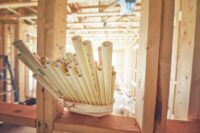
By Jonathan Simon Most homeowners don’t think about the plumbing materials in their homes until a problem occurs. Yet, plumbing materials play a significant role in their day-to-day quality of life, especially when the system doesn’t deliver on their expectations. Some plumbing systems can contribute to issues like poor water pressure and water quality. Then Read more
By Jonathan Simon
Most homeowners don’t think about the plumbing materials in their homes until a problem occurs. Yet, plumbing materials play a significant role in their day-to-day quality of life, especially when the system doesn’t deliver on their expectations.
Some plumbing systems can contribute to issues like poor water pressure and water quality. Then, of course, there are the reliability problems that can arise when the plumbing system proves incompatible with local water conditions, leading to failures and water damage that can turn a homeowner’s life upside down.
So, while homeowners don’t spend much time thinking about plumbing materials, plumbers should. Here are four ways that you can protect your customers thanks to the performance of CPVC.

Water Pressure
Low water pressure can be frustrating for homeowners every time they shower, and the design of the plumbing system could be a contributing factor.
Plumbing systems using insert fittings where the fitting goes into the pipe will reduce the system’s diameter at the fitting, restricting flow and creating a much larger pressure loss than occurs with systems where the pipe is inserted into the fitting, such as CPVC and copper. Even expansion fittings, which have the largest internal diameter of the insert fittings, can cause up to 7x more pressure loss in the system compared to a CPVC or copper fitting.
Insert fittings can also create turbulent zones in the pipe as water jets out of the restriction created by the fitting. These higher-velocity zones may require that the design velocity of the system be reduced to remain within manufacturer specifications.
Plumbers can compensate for the issues created by insert fittings by upsizing piping, but that adds significant cost to projects. Using larger pipe to slow down the water and reduce pressure drop can also pose challenges in areas that need to comply with water and energy efficiency standards. By minimizing pressure drop across the system, CPVC helps preserve water pressure at fixtures.
Water Quality
No plumbing system can improve water quality, but the choice of materials can minimize the risk of various sources of contamination.
One of those risks is biofilm growth. Biofilm that forms inside residential plumbing systems can contain bacteria such as E. coli, coliforms and legionella. The susceptibility of a particular material to biofilm is called its biofilm formation potential and varies across materials. Independent research has found that CPVC has a lower biofilm formation potential than other plastic plumbing systems and is consistently among the lowest of plumbing systems tested.
Permeation and leaching also present risks to residential water systems. Materials vulnerable to permeation can allow dangerous chemicals that come in contact with the outside of the pipe to enter the water supply. The U.S. EPA, in their study on Permeation and Leaching, found that vinyls such as CPVC are virtually impermeable at low levels of exposure and that polyolefin plastic plumbing materials accounted for more than three-quarters of the documented permeation incidents in the United States.
NSF 61 is the industry standard for protecting against unsafe leaching of chemicals from plumbing materials into the water supply. FlowGuard Gold CPVC is certified to NSF 61 under all water conditions. Copper and some PEX brands have limitations on their NSF 61 listings.
By reducing the risks from biofilm formation, permeation and leaching, plumbers play an important and underappreciated role in protecting the health of their customers. And while homeowners may never fully appreciate that role, they could notice the difference in water quality when materials other than CPVC are used. According to research from Virginia Tech, CPVC has the lowest impact on drinking water taste and odor of any residential plumbing material.
Reliability
In addition to good pressure and water quality, homeowners want a plumbing system they don’t have to worry about. If there’s one thing more frustrating than a water leak, it’s having a second leak soon after the damage from the first has been repaired. That was the experience of the Jackson family in Battle Ground, Washington. They had multiple plumbing system failures, one after the other, until an expert finally diagnosed the root cause of the problem as incompatibility between the plumbing material chosen for their ten-year-old home and local water conditions. When the home was repiped with CPVC, the problems disappeared.
CPVC is the only residential plumbing material that is naturally immune to chlorinated drinking water. As municipalities strive to maintain water safety through treatment methods that produce higher oxidative reduction potential in the water they supply, this is more important than ever. CPVC can perform reliably in water conditions and at temperatures, pressures and velocities that could lead to degradation and early failure in other plastic or metal plumbing systems.
Sustainability
For homeowners that prioritize the sustainability of building materials, CPVC is a very attractive choice. Based on comparisons using the National Institute of Standards (NIST) BEES software, FlowGuard Gold CPVC requires less energy to manufacture, has lower embodied energy and results in fewer emissions over its service life than PEX and copper. CPVC is also recyclable through proper centers.
In addition, FlowGuard Gold CPVC is the only residential plumbing system certified by Home Innovation Labs National Green Building Standard (NGBS) and has a lifecycle assessment to enable the material to contribute to LEED certification.
Making the Right Choice
If you’re looking to give your customers the water quality, pressure, reliability and sustainability they are looking for, CPVC is the right choice. And CPVC doesn’t just deliver benefits to homeowners. Plumbers experience lower material costs, faster installation and excellent support from leading manufacturers. To learn more, visit flowguardgold.com/plumber-resources.
Jonathan Simon is the North American residential plumbing manager for Lubrizol Advanced Materials. Half of the world’s consumers use at least one product containing a Lubrizol ingredient. Advanced materials products create and/or improve the performance of our customers’ products and enable unique performance attributes. For 60 years, FlowGuard Gold Pipe and Fittings have provided reliable hot and cold water plumbing systems to residential and commercial buildings.

Within a 45-year career, a construction worker has a 1-in-200 chance of being fatally injured on the job. But it doesn’t have to be that way. Construction Safety Week serves as a reminder to industry professionals that they should continue to reinforce and follow job site safety procedures to protect themselves and their teams. While Read more
Within a 45-year career, a construction worker has a 1-in-200 chance of being fatally injured on the job. But it doesn’t have to be that way. Construction Safety Week serves as a reminder to industry professionals that they should continue to reinforce and follow job site safety procedures to protect themselves and their teams. While this is a great first line of defense, there’s also another way you can create a safer construction site: choosing safe and smart products.
As plumbing and mechanical contractors know, plumbing codes often require an end goal without specific direction on how to get there, which can force you to piece together unreliable makeshift methods that could have serious consequences if installed incorrectly. Even methods and tools that have been around a long time can be outdated to the point that they present safety issues.
By updating your workflow to incorporate modern and engineered solutions, you can better protect yourself on the job while maintaining professional and cost-effective installations. Look for plumbing solutions that comply with code regulations and go above and beyond to address OSHA requirements and eliminate risks associated with field-devised or traditional installation methods.
Those risks vary across products, as do the benefits of using engineered solutions instead. Below are some common makeshift methods for commercial plumbing installations and how using engineered replacements can better protect you on the job.
The risks of common field-devised plumbing installations
Makeshift methods are most common for two kinds of plumbing installations: pipe supports and water heater accessories. But as is the case for all field-built installations, they’re entirely inconsistent, meaning they could fail and cause harm to you or your team. Fortunately, there are better alternatives that are easily accessible and trusted today.

Pipe Supports
The most common pipe supports to be cobbled together are overhead and in-wall pipe supports. In-wall supports are often made from scrap material, such as cut lumber, tin-snipped metal studs, baling wire and random strapping material, while trapeze pipe supports might be fashioned using strut or channel that is manually cut into pieces with a variety of expensive clamp options.
When it comes to no-hub fitting restraints, it’s not uncommon for installers to use different materials like metal banding, angle iron, riser clamps and thread rods, but this is untested, unproven and costly. More specifically, makeshift no-hub fitting restraints usually fail to meet the intent of CISPI standards.
The inconsistent reliability of these makeshift installations means they could fail and cause a potential leak hazard . For in-wall supports, there’s an additional safety hazard from using several power tools to create the final product.
By contrast, several engineered overhead and in-wall supports are made of durable materials like galvanized steel so they’re strong enough to support different applications throughout the entire life of the building, reducing the risk of injury during and after installation.
For no-hub restraints, manufactured solutions take on-site cutting, bending, measuring and modifications out of the picture and replace them with an engineered solution supported by test data, torque data and product specifications that ensure the safety and reliability of the restraint’s design. The result may look something like the HoldRite #117 series, the only no-hub restraint product to have third-party testing data that shows what each product is rated and tested to.
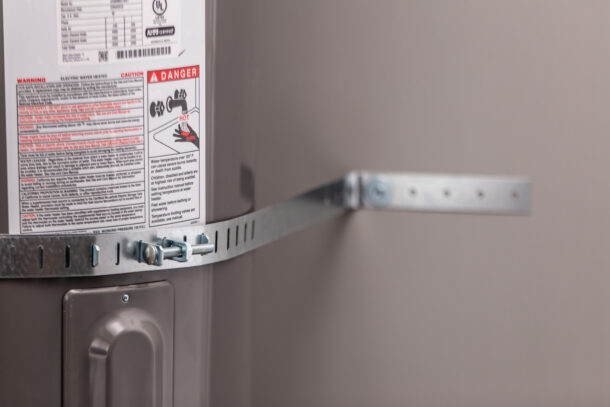
Water Heater Supports
Water heater platforms and seismic restraints are some of the most common water heater accessories assembled in the field. Platforms are sometimes built with wood or steel, while random steel strapping or even plumber’s tape is often used to create an earthquake restraint.
But this offers no engineering data regarding the stability or longevity of the installation, which can lead to injury during installation and, down the line, leaks or even an explosion hazard if natural gas is involved.
On the other hand, professionally manufactured water heater platforms are designed for safety and strength and list explicit weight limits, so you don’t have to wonder if it’ll support the water heater. Some brands, such as HoldRite, have water heater supports that are third-party lab tested to exceed code requirements and are often certified by other entities as well.
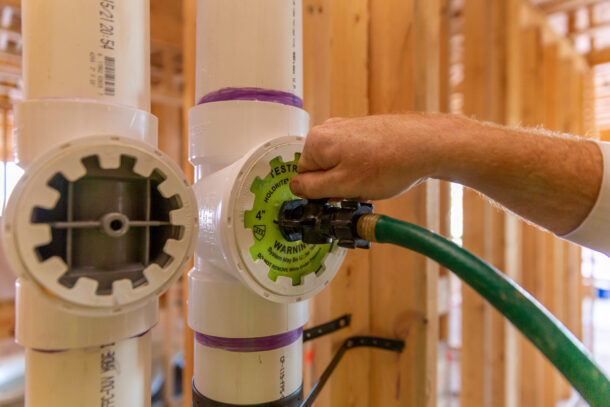
The risks of an outdated DWV testing method: fall hazards
One of the biggest downsides of the traditional plumbing ball testing method is that it can create a high risk of falls during testing. If the test ball ruptures, floors and installers get wet. When it’s deflated at the end of the testing process, water can spray out of the test port location, too. Both possibilities create a slip-and-fall hazard on the job, especially in the wintertime.
Alternatives like help keep job site floors dry during testing by allowing system fill-up or drain-down option directly at the test tee and including a triple-seal protection design to ensure a dry, safe environment. This helps minimize slip and fall hazards caused by water or ice on the floor.
At the end of the day, the first step toward better safety is education. Education about the top risks you’re exposed to and how to reduce those risks. But knowledge must be combined with action for the best results. As you follow policies and procedures that protect you, also consider the tools that can increase your safety. Investing in safe and smart products will always pay off.
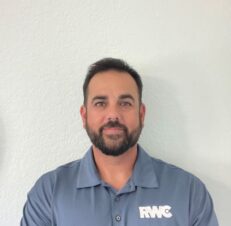 Neil Ross is a product manager at RWC — a market leader and manufacturer of water control systems and plumbing solutions for residential, commercial and industrial applications.
Neil Ross is a product manager at RWC — a market leader and manufacturer of water control systems and plumbing solutions for residential, commercial and industrial applications.
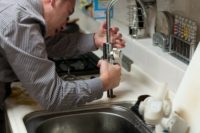
Working in the trades business can be challenging. You need to spend time learning and perfecting your skill set, but it is also important that you focus on doing as much as you can to stand out and get ahead of the competition. Starting out as a new plumber can be pretty daunting, and there Read more
Working in the trades business can be challenging. You need to spend time learning and perfecting your skill set, but it is also important that you focus on doing as much as you can to stand out and get ahead of the competition. Starting out as a new plumber can be pretty daunting, and there are a lot of ideas and processes that you should be thinking about moving forward.
Make sure you focus on doing as much as possible to improve your prospects, and to give yourself the greatest chances of success. There are a lot of things that you need to make the most of right now, and this is something that you have to keep in mind as much as possible. Try to work on the best ways of being able to do this. Here are some of the key examples.

Promote Yourself Effectively
Promoting yourself effectively is one of the best things that you need to do as a budding new plumber, and this is something to work on right now. Try to make sure you come up with some of the best ideas you can use to get your name out there and achieve success. You have to improve and boost your reputation, and make sure you do as much as possible to achieve this. Focusing on social media marketing is one of the most effective ways of being able to achieve this right now, and there is a lot to consider here moving forward. Do your best to focus on being able to achieve this process, and there are a lot of things that you need to get your name out there and really get people excited about the business and you as a professional
Develop a Customer Base
Developing a customer base is one of the key things that you need to improve upon as a budding plumber, and this is the area where you are able to achieve success moving forward. There are a lot of things that play a part in this, and a lot of it is about developing a strong reputation and being able to improve the way you do things as a plumber. You have to provide service of the highest quality, as well as present yourself in a professional and reliable way, and this is one of the key things that you can do to boost reputation and help secure a strong customer base for regular business.
Always do Everything By the Book
There can be a tendency to cut corners when you are first starting out because you want to rush through things incredibly quickly. However, this is something that you should be looking to avoid as much as possible. You need to do what you can to be able to ensure you do things by the book, and this is a great way of being able to make the most of this right now. This means making sure you have the right tools and that you fit and repair things in the correct way. It means remembering to wear a mask and use hand sanitizer. In fact, you could even combine this step with the marketing step by heading to 4 All Promos and stocking up on some branded hand sanitizer. Ensure you do everything in the right way, and that you always place priority on being able to be honest and forthright; this can make all the difference to how you are perceived.
There are plenty of steps you can take that are going to allow you to improve upon this, and there are so many things that play a role in this process moving forward. Try to focus on doing what you can to improve your prospects this year and try to stand out as a new and reliable plumber. Being able to make use of these factors is definitely something that you should be looking to make the most of right now, and there are a lot of things that can help you significantly with this as a working professional.
For more info, check out this blog on some of the best plumbing tools.
